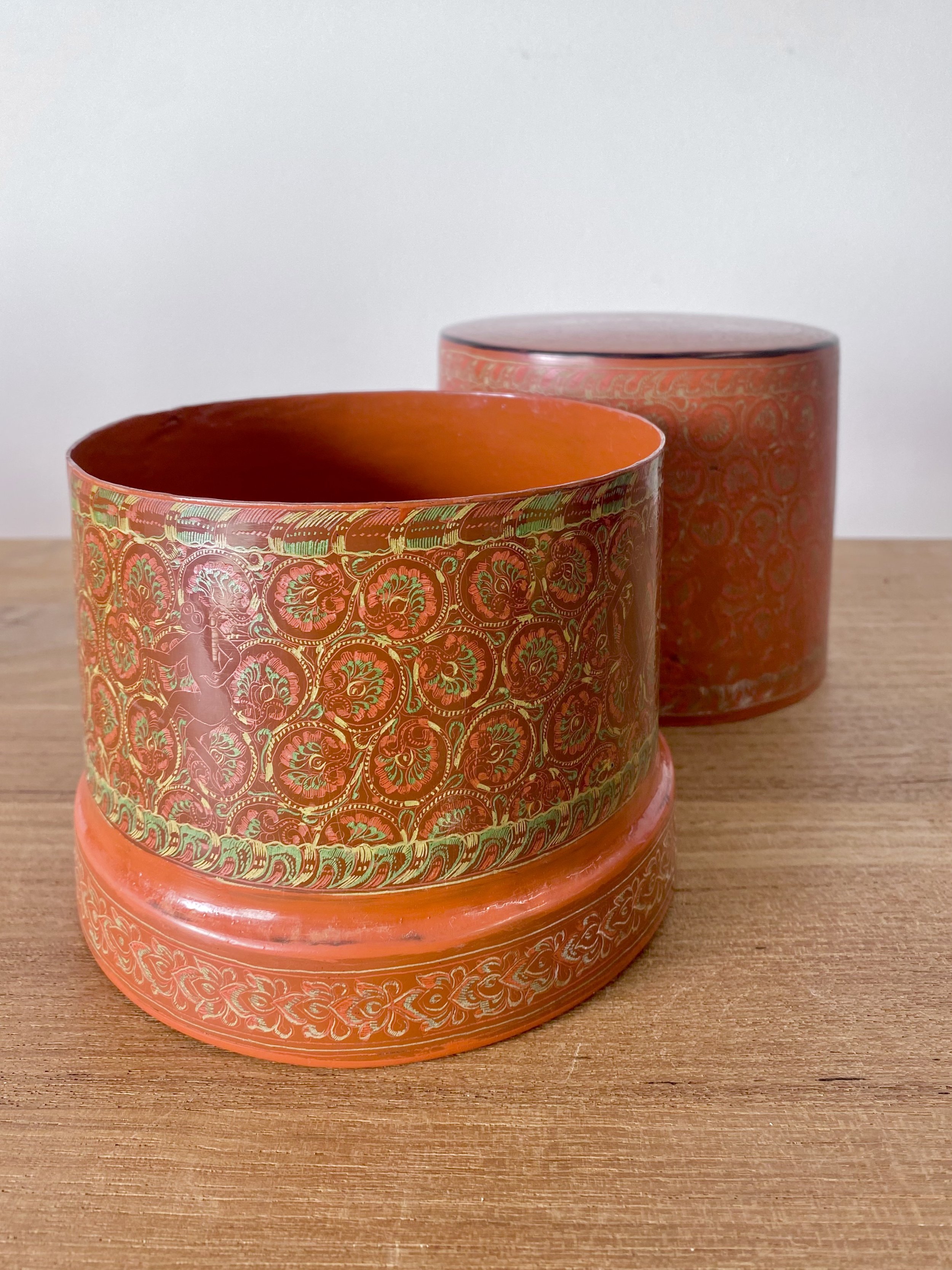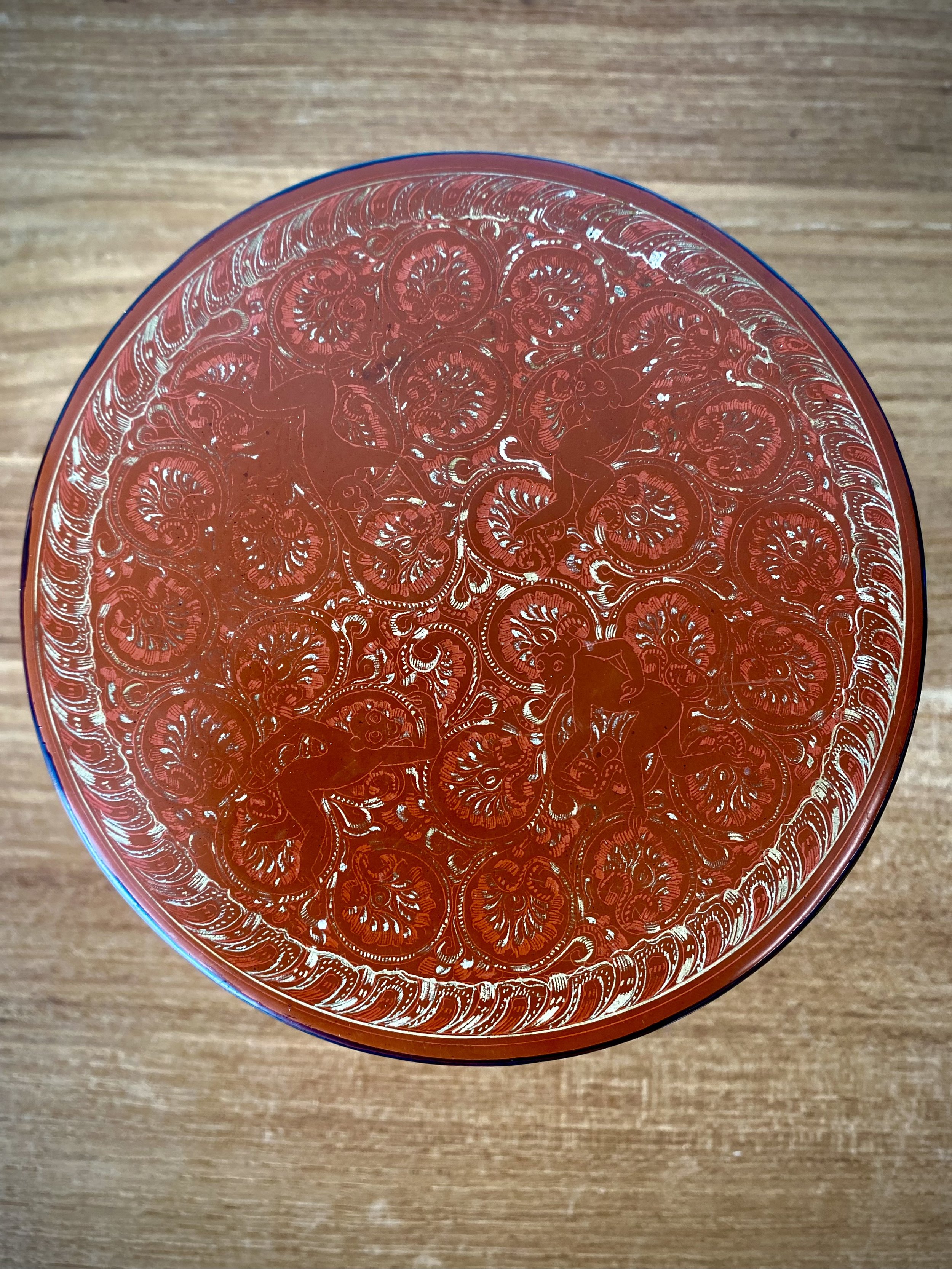 Image 1 of 8
Image 1 of 8

 Image 2 of 8
Image 2 of 8

 Image 3 of 8
Image 3 of 8

 Image 4 of 8
Image 4 of 8

 Image 5 of 8
Image 5 of 8

 Image 6 of 8
Image 6 of 8

 Image 7 of 8
Image 7 of 8

 Image 8 of 8
Image 8 of 8









Burmese Kun-It Betel Box
Betel-box (Kun-it), featuring numerous dancing monkeys, and a Phoenix. Burma, 19th or early 20th century. Bamboo and lacquer.
Betel chewing is an ancient tradition in much of the Western Pacific region, as well as in South- and Southeast Asia. Archaeological evidence suggests that the practice originated in the Philippines, at least 5,000 years ago. Three main ingredients are involved: "betel nut," actually the fruit of the areca palm (Areca catechu); betel leaf (Piper betle); and slaked lime (usually derived from crushed seashells). Typically, thin slices of areca nut and a dash of lime are wrapped in a betel leaf to make a "quid" for chewing. Other flavorings may be added according to taste and local custom, including clove, cardamom, and increasingly, tobacco. The combination acts a mild stimulant, causing increased alertness and an overall warming sensation. The major active ingredient is the alkaloid arecoline, but there are dozens of other compounds in play.
Betel chewing has traditionally been a part of hospitality in the areas where it is popular. The act of cutting the nut and wrapping the quid were analogous to preparing tea for guests, and an elaborate set of tools and formalities evolved around it, particularly in Southeast Asia. Kun-it such as this were once essential at social occasions in old Burma.
5 3/8" tall x 5 1/4" wide. Rubbing to lacquer of the outer portion; interior decorations remain pristine.
Betel-box (Kun-it), featuring numerous dancing monkeys, and a Phoenix. Burma, 19th or early 20th century. Bamboo and lacquer.
Betel chewing is an ancient tradition in much of the Western Pacific region, as well as in South- and Southeast Asia. Archaeological evidence suggests that the practice originated in the Philippines, at least 5,000 years ago. Three main ingredients are involved: "betel nut," actually the fruit of the areca palm (Areca catechu); betel leaf (Piper betle); and slaked lime (usually derived from crushed seashells). Typically, thin slices of areca nut and a dash of lime are wrapped in a betel leaf to make a "quid" for chewing. Other flavorings may be added according to taste and local custom, including clove, cardamom, and increasingly, tobacco. The combination acts a mild stimulant, causing increased alertness and an overall warming sensation. The major active ingredient is the alkaloid arecoline, but there are dozens of other compounds in play.
Betel chewing has traditionally been a part of hospitality in the areas where it is popular. The act of cutting the nut and wrapping the quid were analogous to preparing tea for guests, and an elaborate set of tools and formalities evolved around it, particularly in Southeast Asia. Kun-it such as this were once essential at social occasions in old Burma.
5 3/8" tall x 5 1/4" wide. Rubbing to lacquer of the outer portion; interior decorations remain pristine.